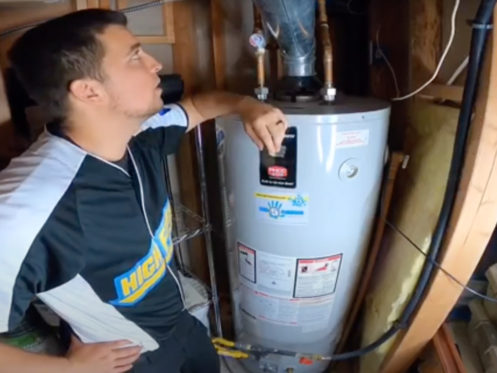They are making several good annotation on Tips For Maintaining Your Hot Water Heater in general in the article on the next paragraphs.

Warm water is crucial for daily convenience, whether it's for a rejuvenating shower or cleaning meals. To ensure your warm water system runs efficiently and lasts longer, routine upkeep is crucial. This write-up supplies useful ideas and understandings on exactly how to preserve your home's hot water system to avoid interruptions and expensive repairs.
Intro
Keeping your home's hot water system could seem overwhelming, but with a couple of basic steps, you can guarantee it runs efficiently for years ahead. This guide covers whatever from comprehending your warm water system to DIY maintenance tips and understanding when to call in specialist assistance.
Value of Keeping Your Warm Water System
Routine maintenance not just expands the lifespan of your warm water system but likewise guarantees it runs successfully. Neglecting maintenance can cause reduced performance, greater energy expenses, and even early failing of the system.
Signs Your Hot Water System Requirements Upkeep
Knowing when your hot water system requires attention can protect against major problems. Watch out for indicators such as inconsistent water temperature, odd sounds from the heating system, or corroded water.
Understanding Your Hot Water System
Before diving right into upkeep jobs, it's helpful to comprehend the fundamental elements of your warm water system. Commonly, this consists of the water heater itself, pipes, anode poles, and temperature level controls.
Month-to-month Upkeep Tasks
Normal monthly checks can help catch minor problems before they intensify.
Purging the Hot Water Heater
Purging your hot water heater gets rid of debris buildup, improving efficiency and prolonging its life.
Checking and Replacing Anode Rods
Anode poles prevent deterioration inside the storage tank. Examining and changing them when worn is crucial.
Checking and Changing Temperature Setups
Changing the temperature setups guarantees optimum efficiency and security.
DIY Tips for Upkeep
You can do a number of upkeep jobs on your own to keep your warm water system in leading problem.
Looking for Leakages
Frequently examine pipelines and connections for leaks, as these can cause water damages and greater bills.
Checking Stress Relief Valves
Testing the stress relief valve guarantees it works appropriately and stops excessive stress buildup.
Protecting Pipelines
Insulating hot water pipes reduces warm loss and can conserve energy.
When to Call a Specialist
While DIY upkeep is helpful, some issues need specialist know-how.
Facility Concerns Calling For Professional Assistance
Examples consist of major leakages, electrical troubles, or if your water heater is consistently underperforming.
Regular Expert Maintenance Conveniences
Professional upkeep can include complete examinations, tune-ups, and guaranteeing conformity with security requirements.
Conclusion
Normal upkeep of your home's hot water system is vital for performance, durability, and expense financial savings. By complying with these tips and knowing when to seek expert help, you can make sure a dependable supply of warm water without unanticipated disruptions.
How to Maintain an Instant Hot Water Heater
Before tinkering with your hot water heater, make sure that it’s not powered on. You also have to turn off the main circuit breaker and shut off the main gas line to prevent accidents. Also turn off the water valves connected to your unit to prevent water from flowing into and out of the appliance. 2. When you’re done, you have to detach the purge valves’ caps. These look like the letter “T” and are situated on either side of the water valves. Doing so will release any pressure that has accumulated inside the valves while at the same time avoid hot water from shooting out and burning your skin. 3. When the purge valves’ caps are removed, you have to connect your hosing lines to the valves. Your unit should have come with three hoses but if it didn’t, you can purchase these things from any hardware or home repair shops. You can also get them from retail stores that sell water heating systems. Read the user’s manual and follow it to complete this task properly. When the hosing lines are connected, open the purge port’s valves. 4. You should never use harsh chemical cleaners or solutions when cleaning your unit. Make use of white vinegar instead. It should be undiluted and you’ll probably use about 2 gallons. 5. Now flush your water heater. This task should probably take about 40 minutes. We can’t give you specific directions for this because the procedure is carried out depending on the type, model and brand of your heater. With that being said, refer to the user’s manual. 6. When you’re done draining the unit, you have to turn off the purge port valves again. Remove the hosing lines that you earlier installed on each of the water valves. Put the valve caps (purge port) back in their respective places and be very careful so as not to damage the rubber discs that are found inside these caps. 7. Now that everything’s back in place, check your user’s manual again to find out how to reactivate your water heating system. 8. Once it is working, turn one of your hot water faucets on just to let air pass through the heater’s water supply pipes. Leave the tap on until water flows smoothly out of it. https://www.orrplumbing.com/blog/2014/september/how-to-maintain-an-instant-hot-water-heater/

I ran across that blog posting about Tips For Maintaining Your Hot Water Heater when doing a lookup on the search engines. Enjoyed reading our piece? Please share it. Help someone else check it out. Many thanks for taking the time to read it.
Visit Our Site